Migrant crisis: Can the US take more than 10,000?
- Published

A Syrian refugee family in 2014 in Istanbul
The Obama administration has said it will allow 10,000 Syrian refugees to resettle in the US over the next year. Is this enough? And are there any risks?
An estimated 340,000 asylum seekers have arrived in Europe this year, coming from as far as Eritrea, Iraq and Nigeria.
But the largest portion are coming from Syria, and US officials have been at pains to show how much the US is giving in aid.
According to the White House's National Security Council, the US is the single largest donor to the Syrian crisis response, having given over $4bn (£2.6bn) since the crisis began.
But some, such as UN Secretary-General Ban Ki-Moon's special representative on migration, have said that throwing money at the problem is not enough - it's about taking people.
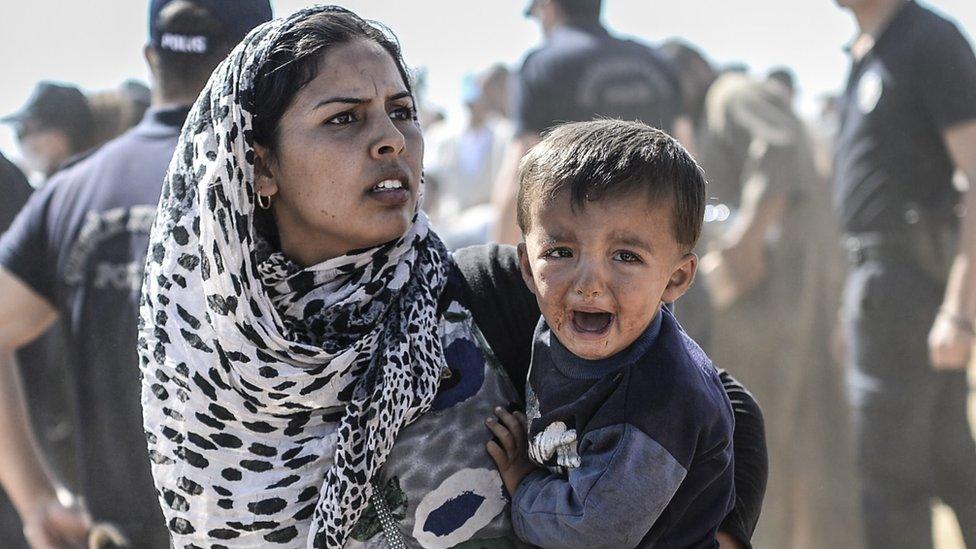
A Syrian Kurdish woman crossing the Turkey-Syria border in September 2014
Is 10,000 people enough?
Recent figures released by the State Department say that the US has accepted approximately 1,500 refugees since the Syrian conflict began in 2011. And another 300 refugees are expected to enter the US by the end of this month.
However, officials noted that from that number about 1,300 of those came to the US since January of this year.
It is also important to note that the US currently takes around 70,000 refugees from around the world each year - and Secretary of State John Kerry has said that number will increase to 75,000 next year.
The UNHCR has registered 4 million Syrians as refugees, and it has asked governments around the world to resettle 130,000 Syrian refugees by the end of 2016.
With a long and storied history of providing support to refugees fleeing violence and persecution, the US has taken half of the UNHCR's total global resettlement requests, experts say, and many are now asking if 10,000 new admittances next year is enough.
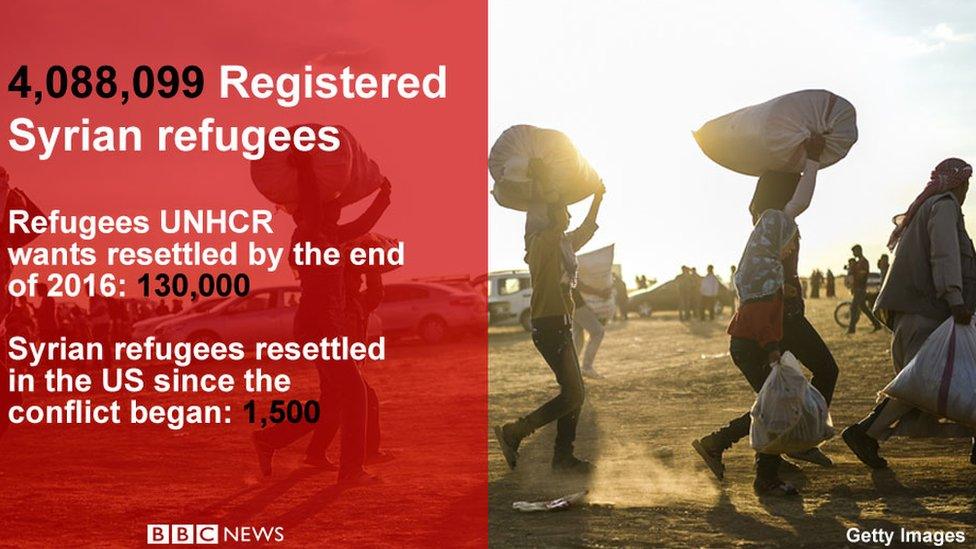
"It's not enough, but it's a start," Kathleen Newland, senior fellow at the Washington-based Migration Policy Institute, told the BBC.
"It's typical [in past conflicts] that we have taken half. The US normally resettles more refugees than all of the countries in the world combined".
"We just have by far the largest programme, and of course we're a huge country, so we have the capacity to do it."
Accept more Syrian refugees, US senator says
In May, 14 US Senators penned a letter, external to President Barack Obama asking him to allow 65,000 Syrian refugees to settle inside the US - a figure that is half of the 130,000 that the UNHCR has referred for global resettlement.
"We urge your administration to work to accept at least 50% of Syrian refugees whom UNHCR is seeking to resettle, consistent with our nation's traditional practice under both Republican and Democratic presidents," they wrote.
Earlier this week, Democratic presidential candidate Martin O'Malley echoed that call, saying: "If Germany - a country with one-fourth our population - can accept 800,000 refugees this year, certainly we - the nation of immigrants and refugees - can do more."

A boy plays with a balloon in a Syrian refugee camp in Azaz near the Turkish border in 2013
Could they be a security risk?
It's unclear why the numbers are not as high for the Syrian conflict as they were in previous wars, but there have been concerns expressed that terrorists could exploit the refugee system to enter the US and carry out an attack.
Representative Michael McCaul, a Republican who chairs the House Homeland Security Committee, has said that there were "consistent intelligence community and federal law enforcement warnings that we do not have the intelligence needed to vet individuals from the conflict zone".
He went on to say: "We also know that ISIS wants to use refugees' routes as cover to sneak operatives into the West."
He raised similar concerns in a letter to Mr Obama in June, external, at which time he pointed to the case of two al-Qaeda operatives discovered in 2009 living as refugees, external in Bowling Green, Kentucky, who had been linked to an attack on US soldiers in Iraq in 2005.
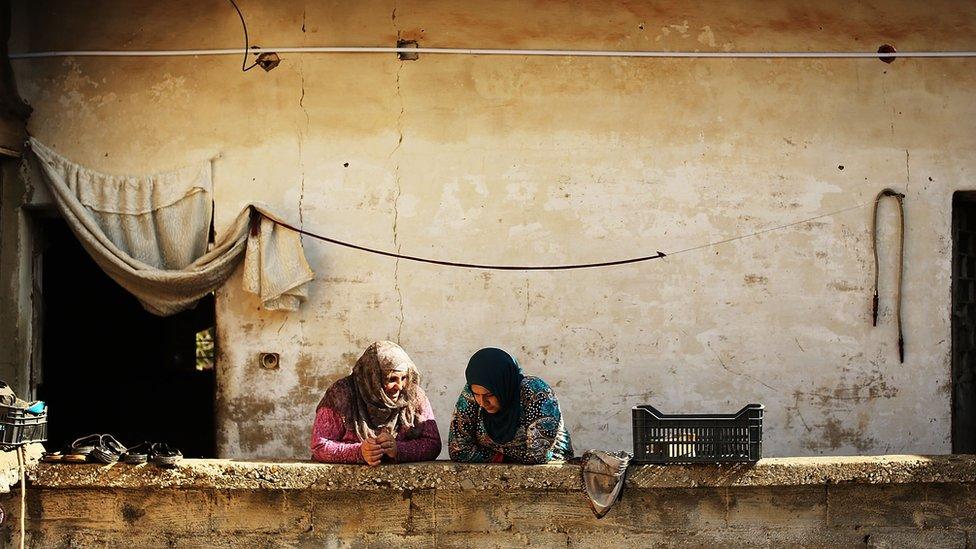
Two Syrian women talk inside a prison-turned-shelter for refugees in the Bekaa Valley in this photo from November 2013
But migration experts say these concerns are overblown, and bureaucratic paranoia is slowing down the process of allowing more people in.
"It's a paranoid fantasy. It's a legacy of 9/11," said Ms Newland. "The refugee resettlement programme is the most laborious, slow, and heavily scrutinised route into the United States.
"If you were terrorist who wants to get in here, you'd be much better of forging a passport and pretending to be a Kuwaiti businessman."
"The level of risk aversion is so high that people tend to get triply and quadrupley scrutinised before they're cleared," Ms Newland said of the security screenings that entering refugees face..
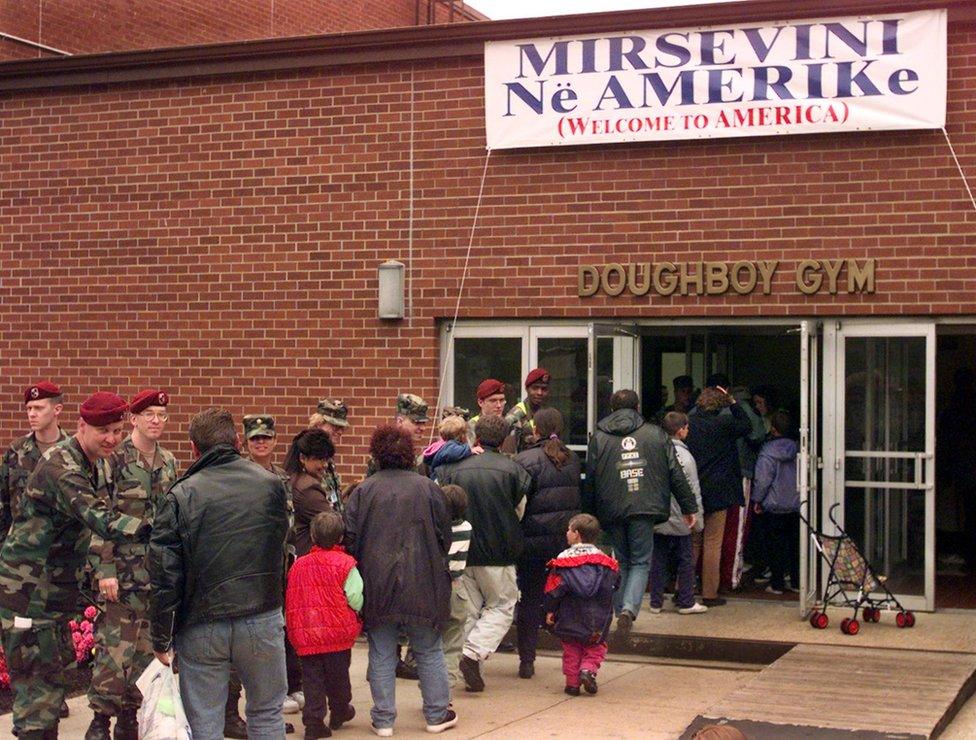
Fort Dix in New Jersey was transformed on short notice in 1999 to serve as the gateway to the US for thousands of Kosovars
"It is heart-wrenching to watch innocent Syrians fleeing the violence in their country, and we can do more to help," Rep McCaul said. "But the best way to solve this crisis is at the source."
So what more could the Obama administration do?
As a compromise that would allay security fears while also allowing the US to accept more refugees, Ms Newland said that officials could look to 1999 when the US pledged to relocate up to 20,000 Kosovar refugees to the US on short notice.
To manage the influx of people and provide time for security checks, the majority of people were taken to Fort Dix, she said.
Dix, a US military base in New Jersey, was part of a post-Cold War base closure programme which meant there was a plenty of unoccupied housing and living infrastructure.
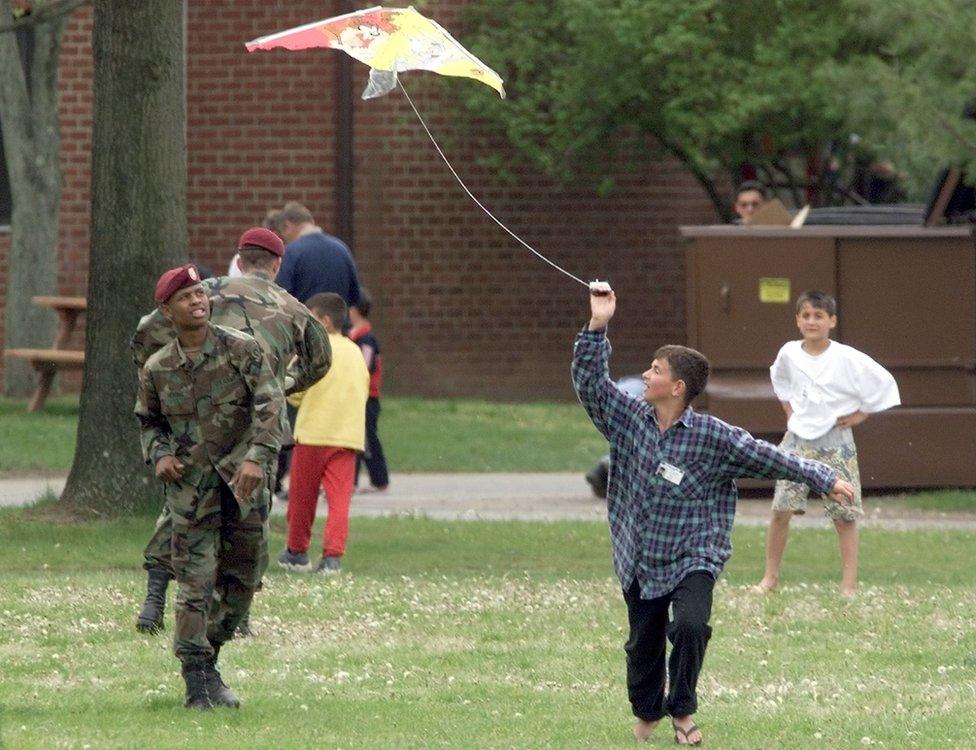
With assistance from a US soldier, a Kosovar refugee flies a kite at Fort Dix in 1999
A New York Times report, external from the time described the base's transformation into a refugee camp.
"Almost overnight, swing sets and play houses sprouted on the base, and by Friday morning, the smiles of toddlers blossomed like so many daisies at the play-house windows."
So how realistic an option is this for the current crisis?
"There are plenty of options to do something like that if we determined," Ms Newland said. "I really do think that if there were a will the whole process could be speeded up."
She also noted that the process of screening incoming refugees could become easier and more efficient as more people are processed.
"That's one area that could be streamlined and I don't think in streamlining we would reduce its effectiveness".
- Published10 September 2015
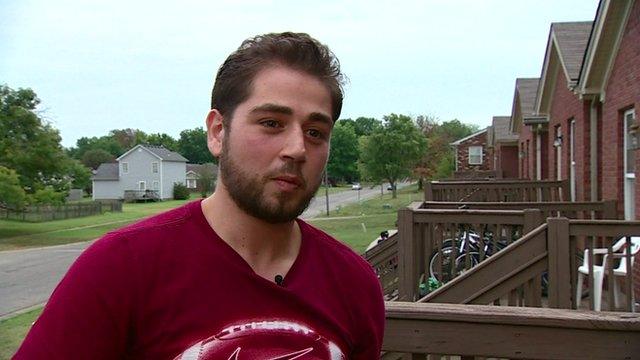
- Published11 September 2015
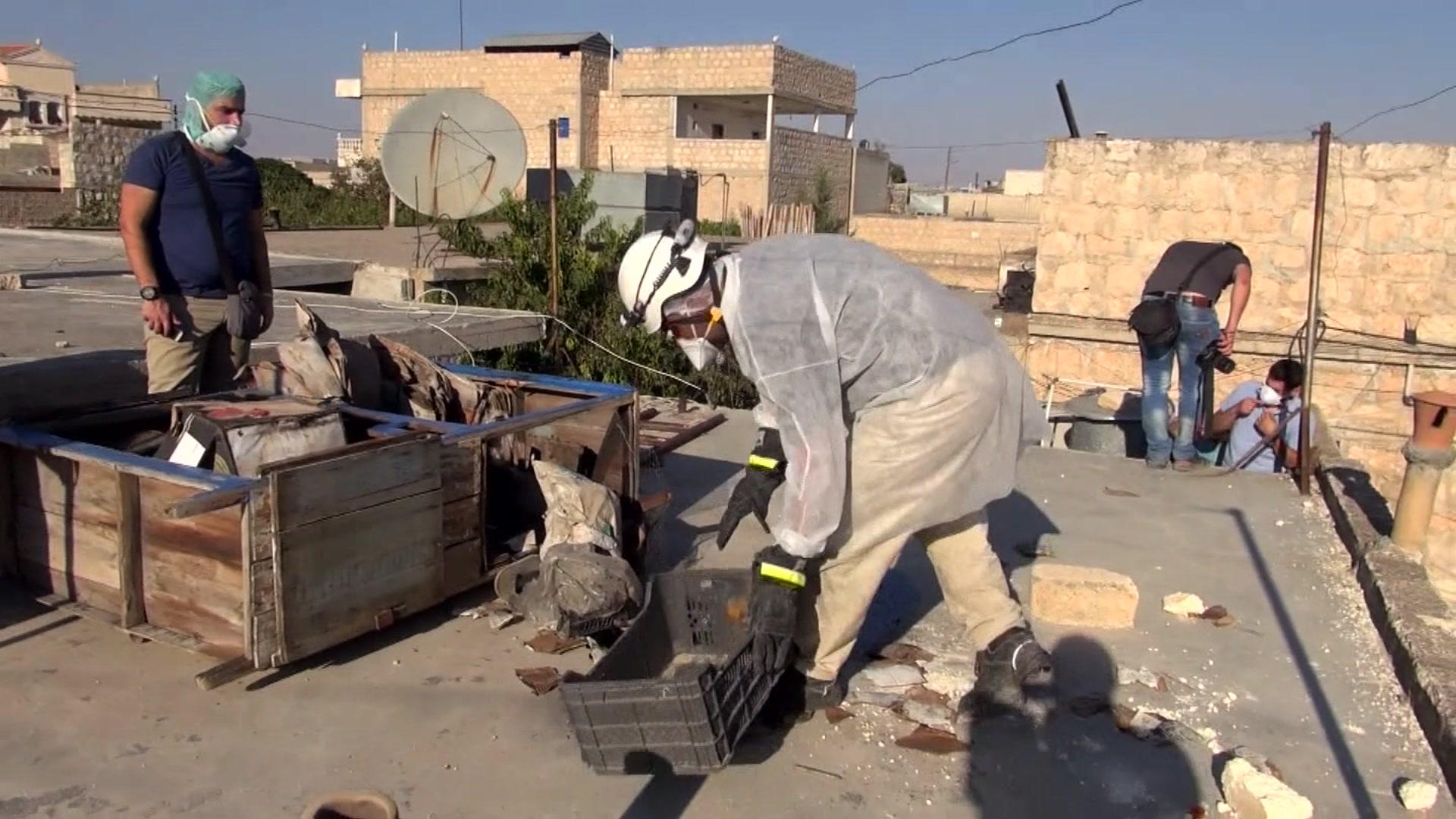
- Published10 September 2015
